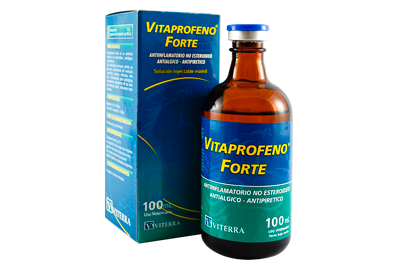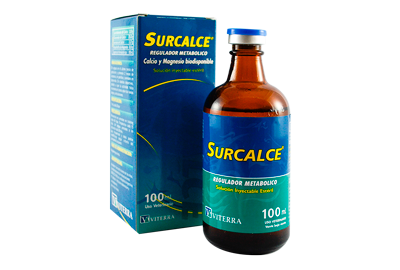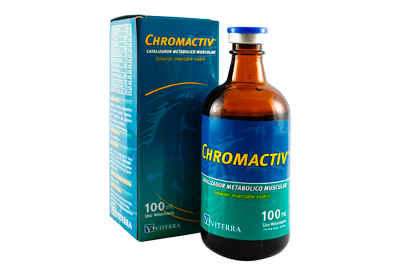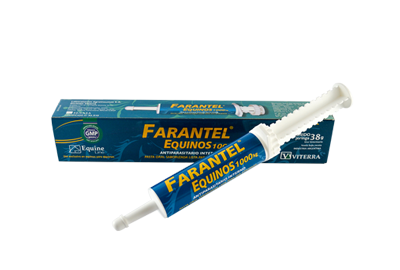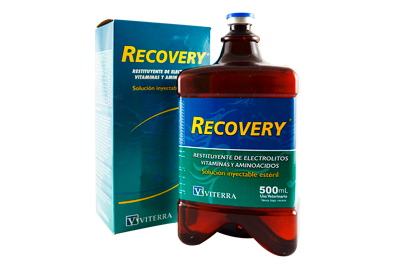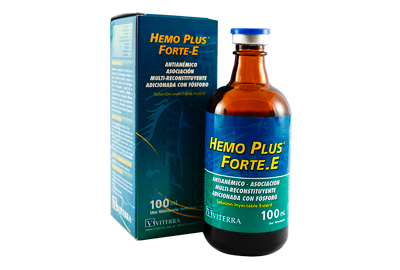Adenitis Equina
Informe Técnico Adenitis Equina
Introduccion
Es una enfermedad infecciosa aguda de los equinos causada por Streptococcus equi.
Cursa con inflamación de las vías respiratorias superiores y abscesos de los ganglios
linfáticos retrofaríngeos y/o mandibulares. Los signos clínicos más frecuentes son
fiebre, secreción nasal serosa que luego pasa a mucopurulenta y faringitis que puede
ser intensa e impedir la deglución.
El tratamiento recomendado consiste en una antibioticoterapia a base de Penicilina.
Debido a que la Penicilina es un antibiótico betalactámico (actúan en la pared
bacteriana) al igual que la Ampicilina. Se dividieron los animales infectados en dos
grupos para ver la respuesta de la Ampicilina Complex y de la Penicilina sódica que se
utilizó como control.
Materiales y Métodos
Animales: Se utilizaron 6 equinos mestizos de unos 400 kg de peso vivo con Adenitis
incipiente. A los mismos se los dividió en dos grupos de 3 animales. El grupo A recibió
una dosis de 10.000.000 UI de Penicilina Pura (Penicilina G sódica) cada 8 hs,
mientras que el grupo B recibió 5 g totales de Ampicilina Complex (Ampicilina sódica
y benzatinica) cada 12 hs. Ambos tratamientos tuvieron una duración de 10 días.
Resultados
- Temperatura rectal: sólo hubo un animal con fiebre por cada grupo al momento de
realizar el diagnóstico (39,1 y 40ºC para un caballo del grupo A y B respectivamente).
Para el día 5 de tratamiento el caballo del grupo A ya no presentaba fiebre, mientras
que el caballo del grupo B aún tenía 39,4ºC. Al décimo día de tratamiento ningún
animal de cada uno de los grupos presentaba una temperatura rectal superior a los
37,5ºC.
- Descarga nasal: Al momento de realizar el diagnóstico sólo dos animales del grupo A
y un animal del grupo B presentaban descarga nasal. Al día 5 del tratamiento todos los
caballos de ambos grupos presentaban descarga nasal mucopurulenta. Al finalizar la
antibioticoterapia dos caballos de cada grupo aún presentaban descarga nasal. En uno
del grupo B era muy escasa pero mucopurulenta, mientras que en los otros 3 caballos
era de tipo seroso.
- Reflejo tusígeno: Al comenzar el foco sólo un caballo del grupo A tenía reflejo
positivo, mientras que los 3 caballos del grupo B presentaban reflejo positivo. A los 5
días del inicio del tratamiento ningún caballo del grupo A tenia reflejo positivo,
mientras que sólo uno del grupo B no presentaba manifestación positiva del mismo. A
los 10 días de comenzada la antibioticoterapia sólo dos caballos del grupo B
presentaban reflejo tusígeno positivo.
- Ganglios linfáticos (mandibulares y retrofaringeos): Solo un caballo del grupo B no
presentaba los ganglios inflamados al momento de ser diagnosticada la Adenitis,
mientras que los caballos restantes presentaban los ganglios inflamados. Esta
inflamación no sólo era evidente externamente, sino que también producía una
convexidad sobre el piso de las bolsas guturales (Fig. 1B), como así también en un
caballo del grupo A fistulizó hacia la bolsa gutural (Fig. 1A).
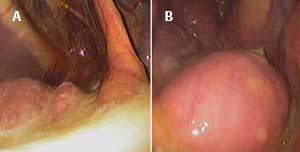
Fig 1. La 1A muestra el empiema generado por la fistulización del ganglio retrofaringeo, mientras que la 1B muestra la protrusión del ganglio hacia el interior de la bolsa gutural.
A los 5 días de tratamiento todos los caballos presentaban inflamación de los ganglios linfáticos, inclusive un caballo fistulizó hacia el exterior uno de sus ganglios retrofaringeos (Fig. 2).
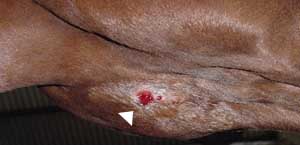
Fig. 2. Fístula del ganglio mandibular izquierdo (flecha) hacia el día cinco de iniciado el tratamiento.
A los 10 días de suministrar antibióticos todos los caballos de ambos grupos aún presentaban ganglios levemente inflamados, aunque esta inflamación ya prácticamente no deformaba el piso de las bolsas guturales (Fig. 3B).
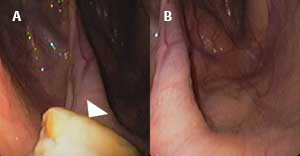
Fig. 3. La 3A muestra el condroide (flecha) como consecuencia del empiema, mientras que en la 3B se observa aún una leve convexidad sobre el piso de la bolsa gutural.
Discusión
Los animales tratados con Penicilina Pura (grupo A) mostraron reflejo tusígeno
negativo y temperatura normal a los 5 días del tratamiento, mientras que la descarga
nasal como así también los ganglios linfáticos continuaban inflamados. A los 10 días
de tratamiento sólo 2 caballos continuaban con moco seroso mientras que los 3
caballos del grupo aún presentaban los ganglios linfáticos levemente inflamados, la
temperatura corporal normal y el reflejo tusígeno negativo. El caballo que presentó
empiema de la bolsa gutural como consecuencia del drenaje hacia el interior de la
misma desde el ganglio retrofaríngeo fue tratado con lavaje de la bolsa utilizando una
solución de yodopovidona al 3% durante 3 días, y el condroide fue removido por vía
endoscópica.
Los animales tratados con Ampicilina Complex mostraron reflejo tusigeno positivo en
2 caballos y aún continuaba con fiebre el caballo que había comenzado el cuadro con
40ºC de temperatura rectal. Todos los animales del grupo presentaban descarga nasal
y ganglios linfáticos inflamados. A los 10 días de tratamiento un caballo conti-
nuaba con secreción nasal mucopurulenta y dos animales continuaban con reflejo
tusigeno positivo. Ningún animal presentaba fiebre y todos tenían aún los ganglios
levemente inflamados.
Conclusión
Los caballos tratados con Ampicilina Complex (grupo B) mostraron una buena
respuesta al tratamiento aunque menos rápida que la del grupo tratado con Penicilina
Pura que es el antibiótico de elección para esta enfermedad, ya que 10 días después de
haber finalizado la antibioticoterapia (20 días de haber comenzado la enfermedad)
todos los animales de ambos grupos estaban recuperados. Por otra parte la
administración de Ampicilina Complex permite realizar la administración del
antibiótico cada 12 hs., con lo cual se facilita el tratamiento y es menos costoso. Es
importante remarcar que con el fin de no enmascarar la acción de los antibióticos no
se realizó autovacuna que es altamente recomendable para esta enfermedad.
